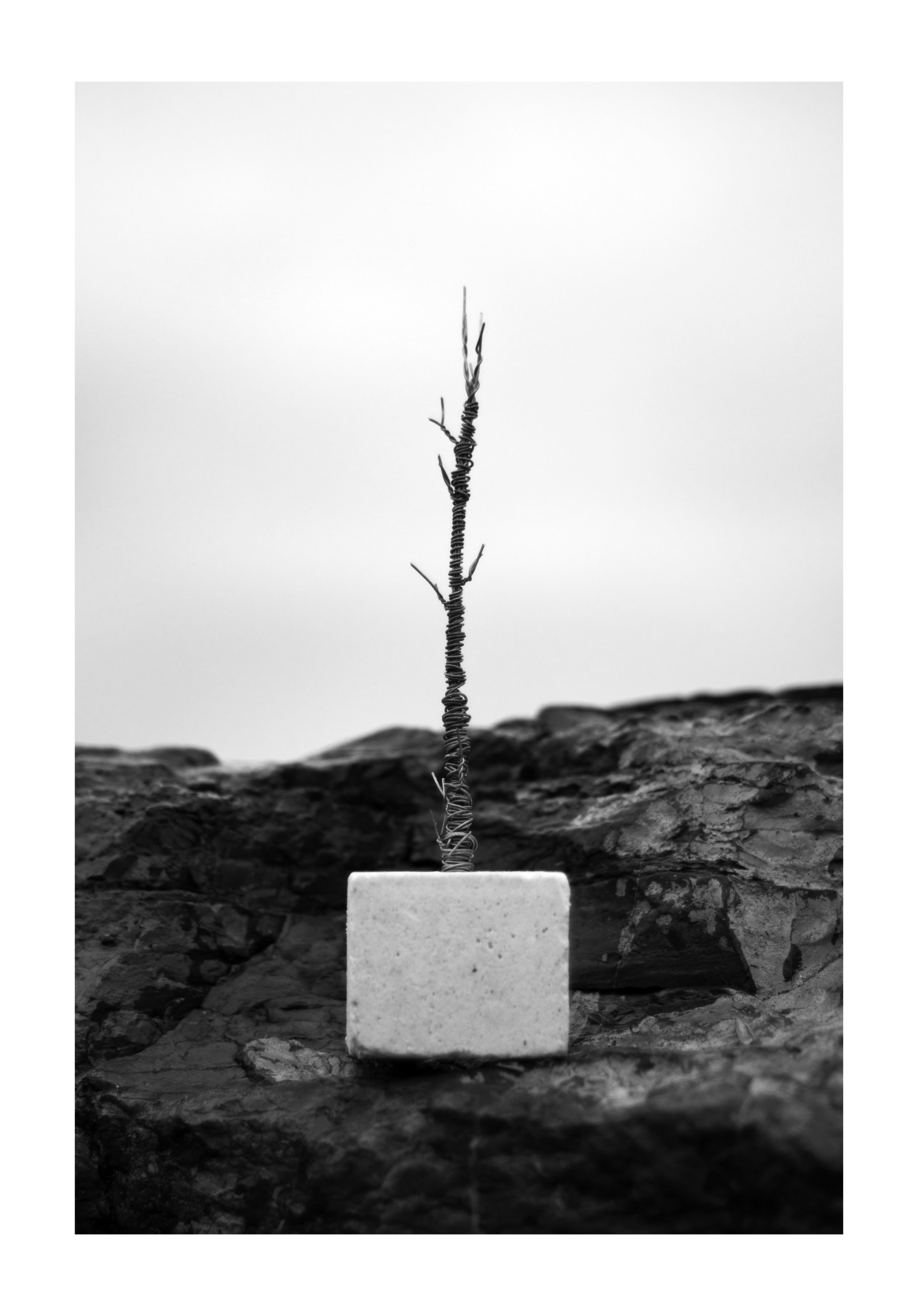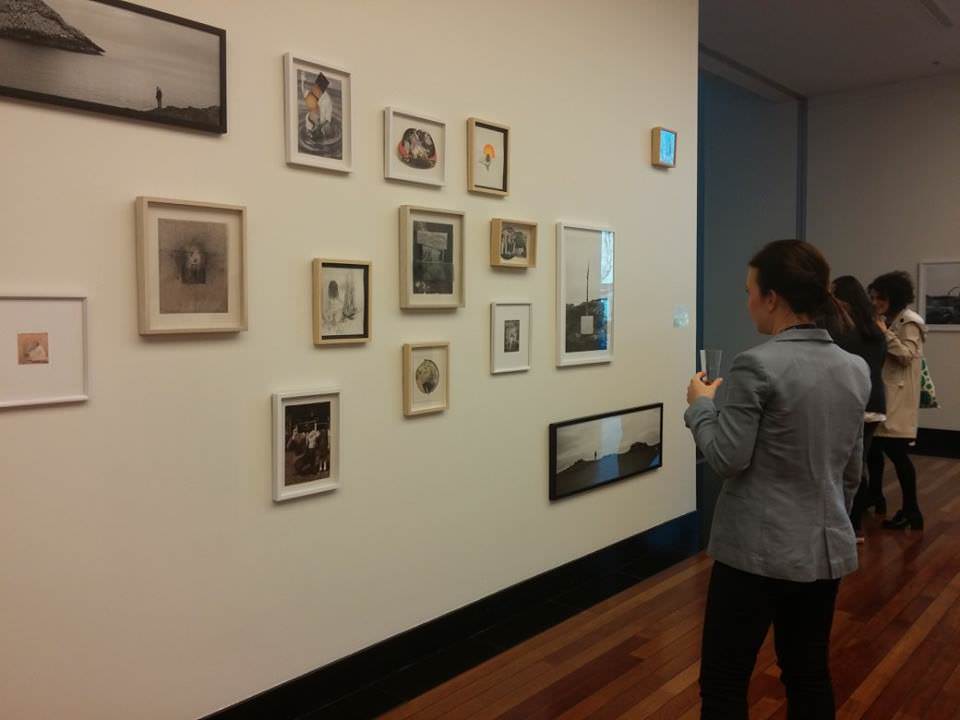© Turkuvaz Haberleşme ve Yayıncılık 2024
Gallery 5, which supports art and artists at every opportunity, hosts the "Gökyüzünde Yalnız Gezen Yıldızlar" (Lonely Stars Hanging in the Sky) exhibition until May 3. The collective exhibition showcases selected artwork from Özge Enginöz, Arzu Kıraner, Romina Meriç, Işık Özçelik, Dinçer Özüarap, Burhan Üçkardeş and Süha Zaimoğlu, all dealing with the theme of loneliness. The exhibition examines existential loneliness and the dilemma this loneliness creates. In this exhibition there are works produced with various techniques, such as photographs, paintings, collages, sculptures and neon lights. The works of art showcase the uncanny sense of belonging we have in relation to the world we live in. The loneliness focus of the exhibition emerges as a reality in the deepest sense of being human. Daily Sabah had the chance to interview some of the artists whose works are being showcased in the exhibition and learn more about the story behind their art.
Daily Sabah: In the exhibition that examines existential loneliness and the dilemma this loneliness creates, what story does your work tell?
Özge Enginöz: I am usually interested in the situation of our existence in general, the effort that we humans give to exist. The communication that humans have with one another and how they can be themselves when in this act of communication is how I define existince. In my work, I usually use altered and distorted plant-headed figures and the combination of natural and artificial materials, which you can also see in my sculptures.
Arzu Kıraner: Well, I am intrigued by the idea that all we have to realize and conceptualize existence in words. My work speaks of this Cartesian paradox. And if it is true that all we have are words, then everything is pure fiction, and my closeness or connection with others is imaginary as well.
Süha Zaimoğlu: As you can see our work is a human figure. He is actually a lonely character that is a figment of our imagination. The moment we started believing in him, he started to live a life of his own, and he has been trying to give meaning to life. The moon that is on his head represents his curiosity and his effort to position himself in life. The character is looking for something in all the landscapes we see him in, and he is lonely when doing so.
Burhan Üçkardeş: As in alchemy, our figure is trying to find its place amongst the living and nonliving. Sometimes he is unsure, but sometimes he looks as if he has adapted to his environment. The story that our work is telling is this search within life.
Dinçer Özüarap: My works tell a story that is directly related with our humanity. There is a certain loneliness that comes from birth, and this is what my works are trying to reflect.

D.S: What does it mean to you to have your work showcased in a collective exhibition like this one? Do you know any of the other artists?
Yes, I know them. Working with artists who are newly starting their art careers is very exciting for me. I am going to have my third personal exhibition open soon, and being active with collective exhibitions like this one is something I prefer to do.
I am very pleased to have my work here in this collective exhibition. I met some of the artists last year at another exhibition. Contemporary art in Turkey is developing further every year, I am very proud to be a part of it.
This is my second collective exhibition. The topic that an exhibition handles might not be completely understood through just one artist's works; this is why it is important for collective exhibitions to take place.
D.S: In this exhibition there are works made with various techniques, such as photographs, painting, collages, sculptures and neon lights. Which one is your area of interest? Have you always worked in this field?
I am essentially a collage artist. Since university, I have been working on collage techniques. I bring together pieces of artwork together that are usually videos, paintings or sculptures.
D.S.: What kind of emotions are you expecting to evoke with your artwork and the exhibition as a whole, from the visitors who come to see the exhibition?
Özge Enginöz: Since I have always received an interdisciplinary education, I have always worked with different forms. I expect that the visitors who come to the collective exhibition will find their own differentiation process within them. I want them to question how much they are being themselves within their family, society and business life and to ultimately make them look inside their own inner world.
D.S: With its main theme being loneliness, are your works being showcased in this exhibition a product of a time in which you felt lonely yourself?
I believe that to be an artist, one must experience loneliness and solitude. Some people can even experience loneliness in very crowded places. Yet unfortunately, I am not one of them: crowds distract me. I am surrounded by people most of the time, so I need to manage my hours to give myself as much loneliness as possible to connect with my subconscious and artistic mind.
It really is. When you are trying to define yourself, one must first look around and then look within. However, if when we look around and see no one, we only have ourselves to look at. This is essential in a way. When we look at ourselves, we come across imaginary characters like the ones in our work.
D.S: Can you tell us about the process of manufacturing your works here in the exhibition? Are your works something you produced just for this exhibition?

This particular work was manufactured according to my specs by a third party. The work in this show is actually part of a series in progress. The theme of this series is "creation," and in it I am investigating the motivations that cause it. I am interested in the entire spectrum of the word "creation," such as the creation of childbirth, creations of God, as well as the creation of art. I am also exploring my own desire to create. I feel this deep obsession and line of questioning and intrigue that draws me forward or deeper as an artist.
This work is actually something that is connected to a musical project. I'm a musician myself, and transporting this musical project to photography was Burhan's idea. The moon head and the technical details are something that Burhan produced himself.
We made this project in 2012. We discussed first the theoretical perspective, then decided on the landscapes, and then photographed using digital techniques. Later, we decided that we wanted to showcase the work through five different photographs. Aside from the photographs we have, thanks to Süha, a 30-second soundscape that goes along with the artwork.
In Hasan Ali Toptaş's book "Ölü Zaman Gezginleri" (The Dead Time Travelers), there is a part in which he talks about giving human values to something that is not living. This is what I have tried to do with my work with the photographs of the wire statue. I'm studying photography, and it has always been my biggest interest to take photographs and also work with different materials.
